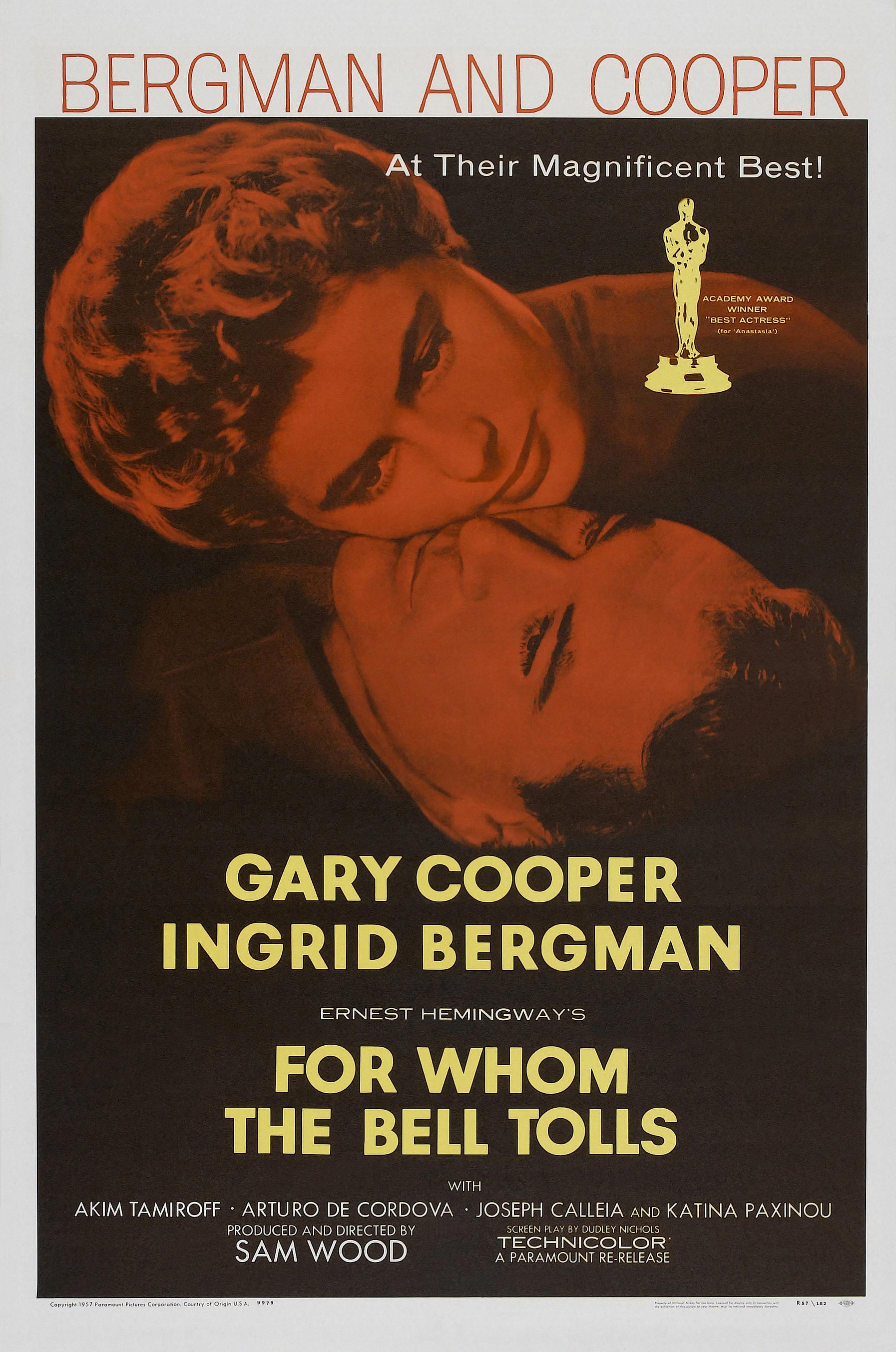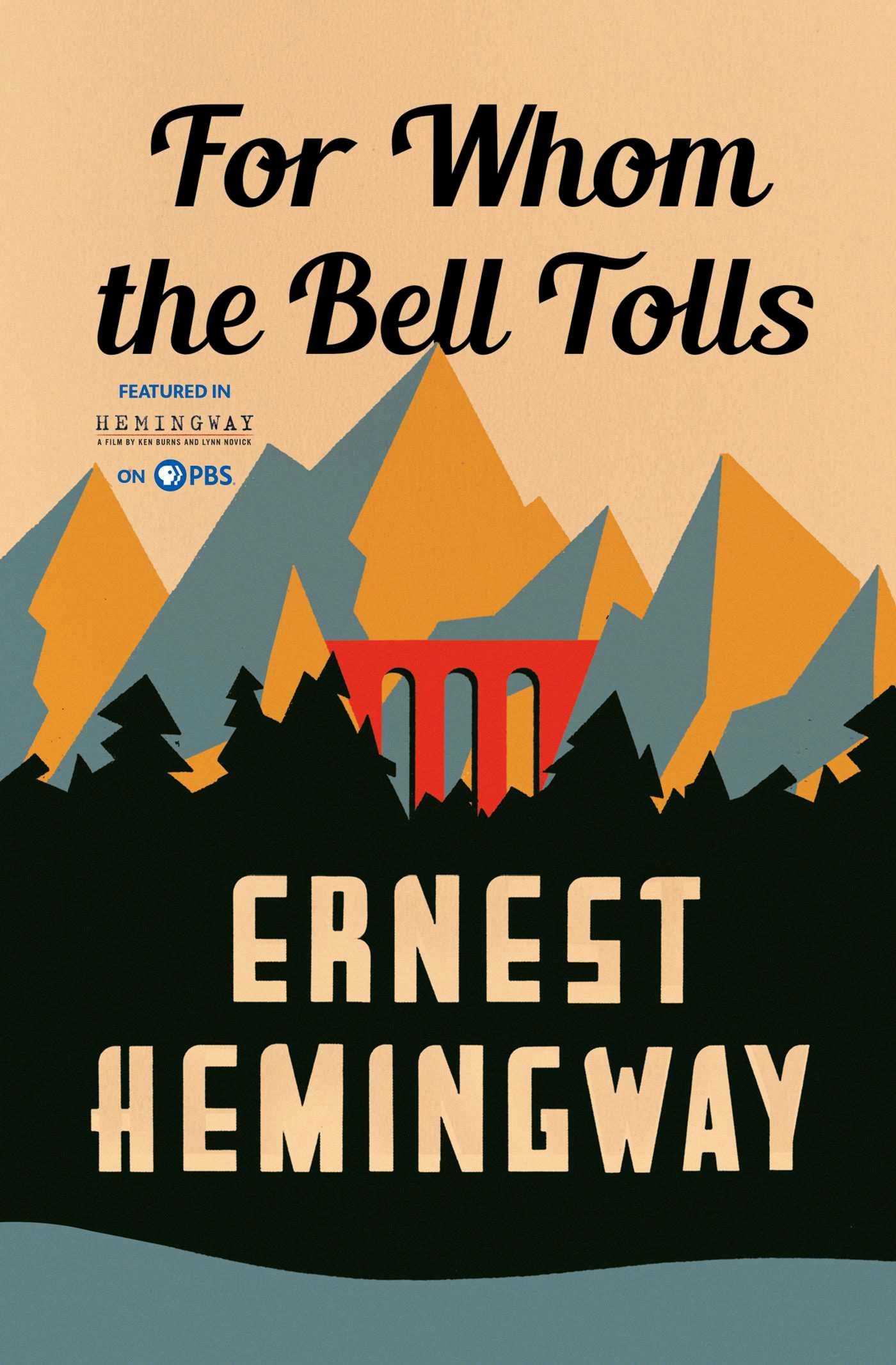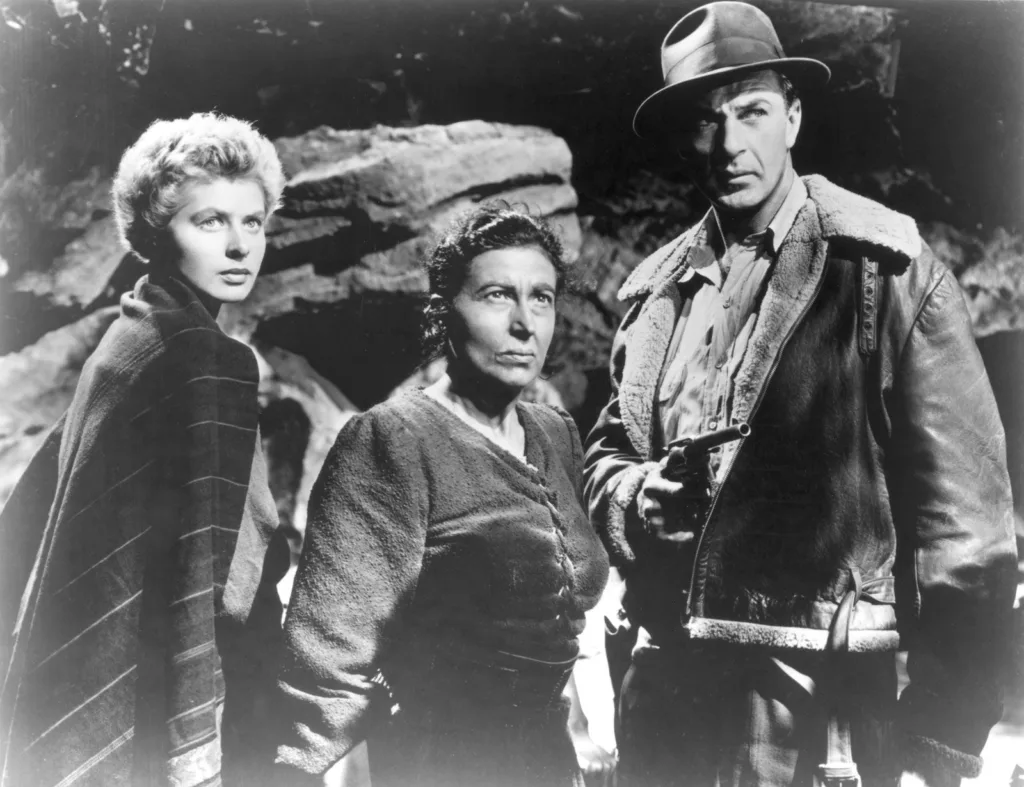The phrase “for whom the bell tolls” has been immortalized in literary history thanks to John Donne, who used it in his famous prose work, Meditation XVII. However, the phrase has taken on a life of its own and has become a symbol for something much larger than Donne’s original intentions.
In Ernest Hemingway’s novel, For Whom the Bell Tolls, the phrase takes on a new meaning. The book is set during the Spanish Civil War, and the bell is used as a symbol of death and destruction. The book’s title comes from the idea that every death diminishes us all, and the tolling of the bell is a reminder of the fragility of life.
Love in War is a prominent theme in the novel, and the characters of Robert Jordan and Maria are an excellent example of this. Despite the violence and chaos aroud them, they manage to find love and form a meaningful relationship. However, the threat of death is always present, and this only serves to strengthen their bond.
Cultural Connections are also evident in the novel. Hemingway’s interest in the Spanish Civil War is apparent, and he uses the book to explore the political and cultural landscape of the time. The novel also examines the role of nationalism and how it can lead to violence and conflict.
Violence, Cowardice, and Death are also prevalent themes in the novel. The characters are forced to confront the harsh realities of war, including the possibility of death and the difficult decisions that come with it. The book also explores the concept of cowardice and how it can lead to tragic consequences.
The Eternality of the Present is another theme that Hemingway explores in the novel. The characters are forced to live in the moment, as the threat of death is always present. This creates a sense of urgency and immediacy that permeates the entire book.
For Whom the Bell Tolls is a novel that explores many complex themes, including love in war, cultural connections, violence, cowardice, and the eternality of the present. The phrase “for whom the bell tolls” is a powerful symbol of death and destruction, and it serves as a reminder of the fragile nature of life. Hemingway’s exploration of these themes is what makes the book a timeless classic that is still relevant today.
The Main Theme of For Whom The Bell Tolls
For Whom the Bell Tolls is a novel written by Ernest Hemingway, published in 1940. The story revolves around the Spanish Civil War, and it portrays the experiences of an American volunteer, Robert Jordan, who is fighting on the side of the Republicans. The novel explores vaious themes, such as love in war, cultural connections, violence, cowardice, death, and the eternality of the present. However, the main theme of For Whom the Bell Tolls is the impact of war on human relationships.
Throughout the novel, Hemingway examines the role of love and relationships in a time of crisis. He portrays the characters of Robert Jordan, Maria, Pilar, and Pablo, who are all affected by the war in different ways. Robert Jordan falls in love with Maria, and their relationship becomes a symbol of hope and survival in a world torn apart by violence. Meanwhile, Pilar and Pablo’s marriage is tested by the war, and their love for each other is put to the ultimate test.
Hemingway also explores the cultural connections between the characters, who come from different backgrounds and have different beliefs. He shows how the war has forced them to put aside their differences and work together for a common cause. Additionally, the novel portrays the brutality of war, and how it can lead to violence, cowardice, and death.
The novel emphasizes the eternality of the present, and how the characters must live in the moment and make the most of their time together, as they are constantly surrounded by the threat of death. For Whom the Bell Tolls is a powerful commentary on the impact of war on human relationships, and it remains a classic work of literature that continues to resonate with readers today.

Source: imdb.com
The Motivation Behind Ernest Hemingway’s Writing of For Whom the Bell Tolls
Ernest Hemingway wrote For Whom the Bell Tolls out of his personal interest in the Spanish Civil War of the 1930s. As a foreign correspondent in Paris, he witnessed the Spanish political situation develop under the reign of Alfonso XIII. This experience piqued Hemingway’s curiosity in the events unfolding in Spain, and he became invested in understanding the conflict’s complexities.
Hemingway visited Spain multiple times during the Civil War and spent time with Republican soldiers. He was moved by their bravery and dedication to their cause, which helped shape the novel’s protagonist, Robert Jordan. Through Jordan, Hemingway explores themes of duty, sacrifice, and the human cost of war.
For Whom the Bell Tolls is not only a reflection of Hemingway’s fascination with the Spanish Civil War but also serves as a commentary on the larger issue of war itself. The novel shows the devastating effects of war on individuals and communities, and the toll it takes on those who fight and those who are caught in the crossfire.
Hemingway wrote For Whom the Bell Tolls becase of his personal interest in the Spanish Civil War and his desire to explore the impact of war on people’s lives. The novel serves as a tribute to the brave soldiers who fought in the conflict and a warning against the horrors of war.
Who Said the Quote ‘For Whom The Bell Tolls’?
The famous quote “Never send to know for whom the bell tolls; it tolls for thee” was said by John Donne. Donne was a 17th-century English poet and cleric who is considered one of the greatest metaphysical poets of all time. This quote comes from his work titled “Meditation XVII”, which is a part of his collection of essays and meditations called “Devotions upon Emergent Occasions”. In this work, Donne reflects on the interconnectedness of all people and how the death of one person affects us all. The phrase has become a popular idiom and is ofen used to express the idea that the troubles of one person can have a ripple effect on others.
The Impact of Life on For Whom The Bell Tolls
For Whom the Bell Tolls, a novel written by Ernest Hemingway, is filled with quotes that reflect the author’s views on life. Hemingway’s writing style is simple and direct, and his quotes often have a profound impact on readers. In this article, we will explore some of the most memorable quotes from For Whom the Bell Tolls that offer insights into life.
One of the most famous quotes from the novel is “There’s no one thing that’s true.” This quote suggests that truth is subjective and that everyone has their own version of reality. This quote challenges readers to question their beliefs and to be open-minded to different perspectives.
Another famous quote from the novel is “I had an inheritance from my father, It was the moon and the sun.” This quote highlights the idea that we inherit more than just material possessions from our parents. We also inherit their values, beliefs, and experiences. This quote encourages readers to reflect on the legacy they want to leave behind for future generations.
The quote “So now do not worry, take what you have, and do your work and you will have a long life and a very merry one” emphasizes the importance of living in the present moment and making the most of what we have. This quote encourages readers to focus on the present and to find joy in the simple thigs in life.
The quote “I am thee and thou art me and all of one is the other” suggests that we are all interconnected and that our actions have a ripple effect on others. This quote encourages readers to be mindful of their actions and to strive to make a positive impact on the world.
For Whom the Bell Tolls is a novel filled with profound quotes that offer insights into life. Hemingway’s writing style is simple and direct, and his quotes challenge readers to reflect on their own beliefs and values. These quotes encourage readers to live in the present, to find joy in the simple things in life, and to strive to make a positive impact on the world.
The Ending of For Whom The Bell Tolls
At the end of For Whom the Bell Tolls, the protagonist Robert Jordan is left alone in a forest, after his mission to destroy a bridge during the Spanish Civil War has failed. He is critically injured, with a broken leg, and unable to move. His lover, Maria, is instructed to leave him behind and continue on without him.
As Jordan lies on the pine needles, he reflects on his life and the events that led him to this moment. He knows that his death is imminent and accepts it with stoicism. He also thinks about the futility of war and the impact it has on the lives of ordinary people.
The novel ends with Jordan’s death, as he hears the sound of fascist troops approaching. The final words of the book are “He lay flat on the brown, pine-needled floor of the forest, his chin on his folded arms, and high overhead the wind blew in the tops of the pine trees. The mountainside sloped gently where he lay; but belw it was steep and he could see the dark of the oiled road winding through the pass. There was a stream alongside the road and far down the pass he saw a mill beside the stream and the falling water of the dam, white in the summer sunlight.”
The ending of For Whom the Bell Tolls is poignant and powerful, leaving readers with a sense of the tragedy of war and the human cost of conflict.

Source: simonandschuster.com
Controversy Surrounding Ernest Hemingway’s ‘For Whom The Bell Tolls’
Ernest Hemingway’s novel “For Whom the Bell Tolls” has been a controversial book snce its publication in 1940. The novel is set during the Spanish Civil War and tells the story of an American volunteer named Robert Jordan who is fighting with a guerrilla group against fascist forces. The book has been challenged and banned in several countries, including the United States, for various reasons.
One of the primary reasons for the controversy surrounding the book is its portrayal of sex and debauchery. The novel includes several explicit sexual scenes and references to prostitution, which some readers and educators find inappropriate for high school students. Additionally, the book’s depiction of violence and brutality has also been a cause for concern. The novel includes descriptions of violent deaths and senseless brutality, which some readers find disturbing and inappropriate for young readers.
Another reason for the controversy is the book’s theme of a universe indifferent to people’s suffering. Hemingway’s writing style is often characterized by a sense of existentialism, and “For Whom the Bell Tolls” is no exception. The book portrays a world in which people suffer and die for no reason, and in which there is no clear moral compass. Some readers and educators find this worldview nihilistic and depressing, and argue that it is not appropriate for young readers.
Despite these controversies, “For Whom the Bell Tolls” remains a widely studied and respected work of literature. The book is considered a classic of modernist literature, and is often praised for its vivid depictions of war and its exploration of themes such as love, sacrifice, and the human condition. However, its controversial content continues to be a topic of debate among educators, parents, and readers alike.
The Fate of Maria in For Whom the Bell Tolls
In the novel For Whom the Bell Tolls by Ernest Hemingway, the character Maria is a young woman who was raped by fascist soldiers during the Spanish Civil War. The traumatic experience left her speechless and she was rescued from the wreckage of a train by guerilla fighters. It took her some time to recover her ability to speak ater the incident.
Despite her traumatic experience, Maria quickly falls in love with Robert Jordan, the protagonist of the novel, and confesses her love for him after they sleep together for the first time. Throughout the novel, Maria struggles with the emotional aftermath of her rape and the impact it has had on her life.
It is worth noting that Hemingway’s portrayal of Maria has been criticized by some for perpetuating harmful stereotypes about women who have experienced sexual violence. However, the novel is still widely studied and appreciated for its depiction of the Spanish Civil War and its impact on those who lived through it.
Exploring the Political Allegiances Reflected in ‘For Whom The Bell Tolls’
In the nvel “For Whom the Bell Tolls” by Ernest Hemingway, the protagonist Jordan is asked if he is a communist by Pilar, the strong wife of the guerrilla group leader Pablo. Jordan’s reply is, “I am anti-fascist.” This statement reflects his political ideology and his stance against the oppressive fascist regime during the Spanish Civil War.
It is important to note that the context of the novel is set in the 1930s, a time when communism was gaining popularity in Europe as a means of opposing fascism. However, not all anti-fascists were necessarily communists. There were also anarchists, socialists, and other left-wing groups who opposed fascism.
Jordan’s response to Pilar’s question indicates that his primary motivation for joining the guerrilla group was to fight against the fascist forces and support the Republican cause. His political ideology is not limited to communism, but rather a broader anti-fascist stance.
Hemingway’s novel “For Whom the Bell Tolls” portrays the complexity of political ideologies during the Spanish Civil War. Jordan’s response to Pilar’s question reflects his anti-fascist stance, which is not limited to communism but rather a broader political ideology.
The Biblical Significance of For Whom The Bell Tolls
The phrase “For whom the bell tolls” is not explicitly mentioned in the Bible. However, the concept of interconnectedness and the idea that any loss affects the whole community is present in various verses.
For instance, in 1 Corinthians 12:26, it says, “If one member suffers, all suffer together; if one member is honored, all rejoice together.” This verse highlights the idea that everyone in the community is interconnected, and any loss or suffering affects the whole community.
Additionally, in Ecclesiastes 4:9-12, it states, “Two are better than one, because they have a good reward for their toil. For if they fall, one will lift up his fellow. But woe to him who is alone when he falls and has not another to lift him up! Again, if two lie together, they keep warm, but how can one keep warm alone? And though a man miht prevail against one who is alone, two will withstand him—a threefold cord is not quickly broken.” This passage emphasizes the importance of community and the strength that comes from being united.
While the exact phrase “For whom the bell tolls” is not found in the Bible, the concept of interconnectedness and the idea that any loss affects the whole community is present in various verses.

Conclusion
In For Whom the Bell Tolls, Hemingway uses the metaphor of the tolling bell to convey the interconnectedness of humanity. The phrase “for whom the bell tolls” reminds us that the suffering of one person affects us all. This message is esecially relevant in times of crisis, such as war, when people from different backgrounds must come together to survive. Hemingway’s characters show us that love and relationships are essential for survival and that violence and cowardice only lead to more suffering. Ultimately, the tolling bell serves as a powerful symbol of our shared humanity and the importance of compassion and empathy in times of crisis.
